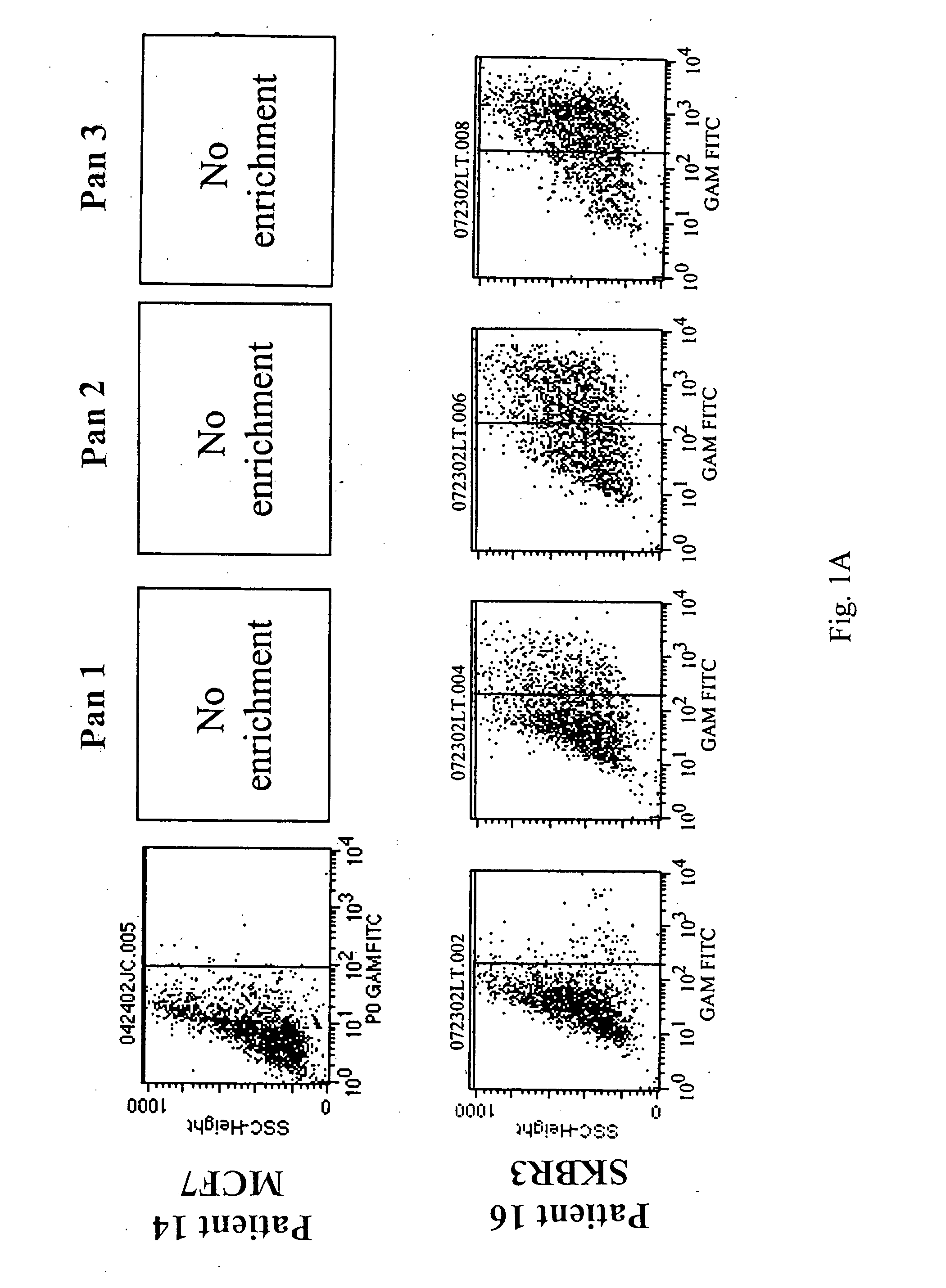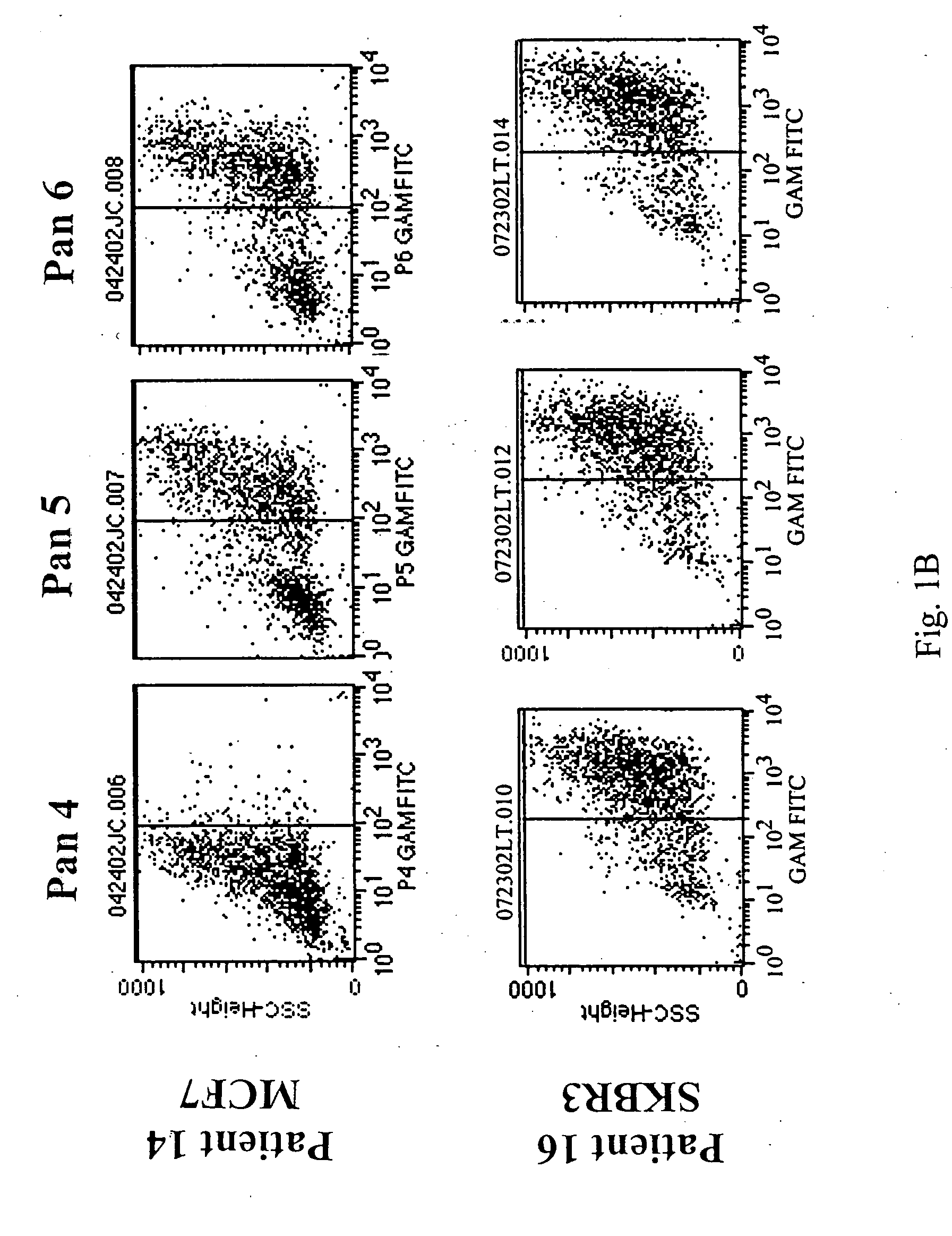Antibody fab fragments specific for breast cancer
a breast cancer and antibody technology, applied in the field of breast cancer biology, can solve the problems of reduced survival rate, under-representation of elderly women, and ineffective chemotherapies for older women
- Summary
- Abstract
- Description
- Claims
- Application Information
AI Technical Summary
Problems solved by technology
Method used
Image
Examples
Embodiment Construction
[0063] Experimental Procedures for Fabs 14.6.19, and 14.6.20. Cloning history: A Fab library was cloned from breast tumor-infiltrating B cells by RTPCR, as published in Coronella, J. A. et al., 2002. Antigen-driven oligoclonal expansion of tumor-infiltrating B cells in infiltrating ductal carcinoma of the breast. J. Immunology 169:1829.
[0064] The library was subcloned into the pCOMBX phage display vector (gift of C. Barbas, Scripps Research Institute, La Jolla, Calif.). Fabs were isolated from the library on the basis of cell-surface reactivity with MCF7 cells. Two Fabs so isolated were 14.6.19, and 14.6.20, the nucleotide and peptide sequences of which are hereinafter described.
[0065] The Fabs were subsequently sent to IDEC Pharmaceuticals, and subcloned into the N5 mKm vector (property of IDEC). A change was made to the 14.6.20 Fab, mutating the TAG amber codon in the VH region (in white text above) to CAG, encoding Gln.
[0066] Flow cytometry analysis of Fabs: below are the binding...
PUM
| Property | Measurement | Unit |
|---|---|---|
| Fraction | aaaaa | aaaaa |
| Fraction | aaaaa | aaaaa |
| Fraction | aaaaa | aaaaa |
Abstract
Description
Claims
Application Information
 Login to View More
Login to View More - R&D
- Intellectual Property
- Life Sciences
- Materials
- Tech Scout
- Unparalleled Data Quality
- Higher Quality Content
- 60% Fewer Hallucinations
Browse by: Latest US Patents, China's latest patents, Technical Efficacy Thesaurus, Application Domain, Technology Topic, Popular Technical Reports.
© 2025 PatSnap. All rights reserved.Legal|Privacy policy|Modern Slavery Act Transparency Statement|Sitemap|About US| Contact US: help@patsnap.com



